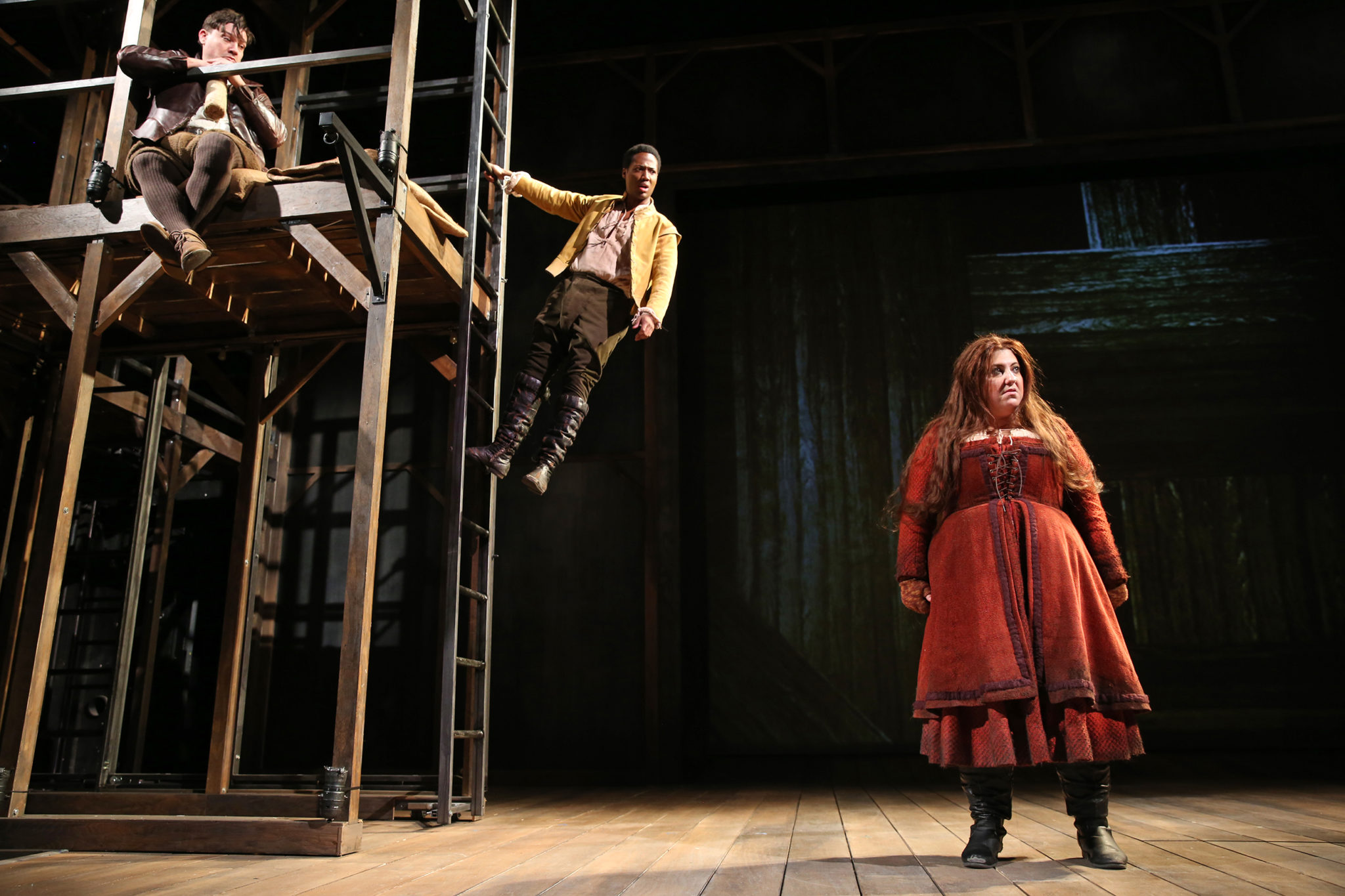
If there were a Doomsday Clock that followed Imogen of Quare, it would be closer to midnight than the one following us humans. It is true, Imogen is not human — not exactly. And perhaps spoilers should be saved for later in the review, but this isn’t a real spoiler. From the moment the lights go out and Imogen comes on stage, her hunched back, her ruffled hair and her crazed eyes staring into the audience, you can sense there is something eerie about her. She seems only tangentially human.
This suspicion is confirmed when during the intermission one shuffles the pages of the program and finds the cast to be divided between “bears” and “humans,” while Imogen is written above both species, not belonging to either, toeing the border not as carefully as she should — which is evidenced in the second act.
When Imogen arrives in London, she is trying to find a way to bring back her hometown, which has vanished off the face of the world, or at least maps. Because the town isn’t depicted on a map, people from neighboring towns are no longer seeing it or its inhabitants. As a result, Imogen thinks existence on paper determines physical reality.
This thread appears throughout the play, as Imogen pleads to have her name included in the folio of Shakespeare’s plays. Despite being set half a century ago, the obsession with documentation as a proof of existence is quite relevant, but this doesn’t stop the audience from questioning why Imogen treats it as an issue of life and death.
The play is a dark comedy, drawing enough nervous laughs from the audience to momentarily distract from the unsettling air pervading through the metal constructions on either side of the stage, where the actors live, eat, sleep and incessantly tease each other. The shadows cast by the metal bars create the illusion of an unending cage, perhaps a subtle foreshadowing.
There is a general feeling of untrustworthiness concerning the identity of the characters, which is amplified by how the same actors play both the bears and the actors in Shakespeare’s company. The first bear enters the stage in the second act, after the company is forced off their land and are walking over the plains outside of London.
“The bear” is clearly a human wearing a head garment and leaning on crutches with her arms to emulate front legs. The lack of effort to conceal the humanness of the bear — especially since we later learn they possess actual bear costumes, which come out in the very last scene -— reminds us of the blurry line between the two species. Things are even more complicated when Imogen, the trusted companion, speaks with the bear and chases her away. This interspecies communication is uncanny, but the actors don’t question their savior too much.
The setting of the play ranges from a stage made of “wooden boards and air” to a bear-fighting ring, which echoes the long-gone practice of gladiators. The owner of this ring, a special friend of Imogen, rises on a mechanical platform, dressed in a cloak which gives him the air of a “Lord of the Rings” character. His styling is so out of tune with the rest of the plain Elizabethan costumes that it seems he is perhaps not of the same world. At moments it even seems possible that he might be an image of God, as he claims he is, especially after seeing how violent his character becomes.
Between changing scenes, the fog machines, the projected montages of a suffering human face and the muffled voices leave the audience shaken in horror instead of nervous laughter. It is also the posture of Imogen in these scenes that makes the play a question about what Imogen really is — since her piercing eyes, which stare longingly into the audience almost give away her identity. The actress playing her carries this posture throughout the scenes and adapts to her character’s needs impeccably, giving Imogen a Frankenstein-esque essence. As if she were bowing down to unseen forces, Imogen doesn’t talk as much on stage as one might want. She is especially silent in the company of others, and even though the actors mention her incredible gift of telling stories the audience witnesses only one instance of this miracle.
The play is a compelling thriller set in Shakespearean England interspersed with philosophical musings on the nature of theater and existence. But it is also a timeless horror story of a woman who is faced with the biggest monster of all: the void of her own inexistence.
Imogen Says Nothing should be seen at night to heighten the experience and preferably with a friend to guard against the void approaching for us all.







